Light emitting diodes (LEDs) are probably the most chronicled electronic components of all time, the ones finding more applications by the minute, and the fastest developing. Laser diodes also fit numerous applications and have a well established place in the design community. And both products have been around long enough to say they are here to stay.
Laser diodes and LEDs both find initial application as light sources; however they differ in size, price, and power. Those differences are narrowing and LEDs are starting to prove themselves as viable alternatives to the venerable laser diode. Let’s briefly look at both individually and then how they are interchangeable.
Laser Diodes
Laser diodes and LEDs have at least one thing in common: they both generate light (fig. 1). Simply described, a laser diode is a light amplifier capable of outputting a narrow, focused beam of light. Monochromatic in nature, laser diodes have an aperture that focuses non-collimated light into an oval cone measuring approximately 0.6-mm wide at the tip of the cone and widening to about 120 mm at a distance of 15m. Typical cone angles range from 12° to 30°.
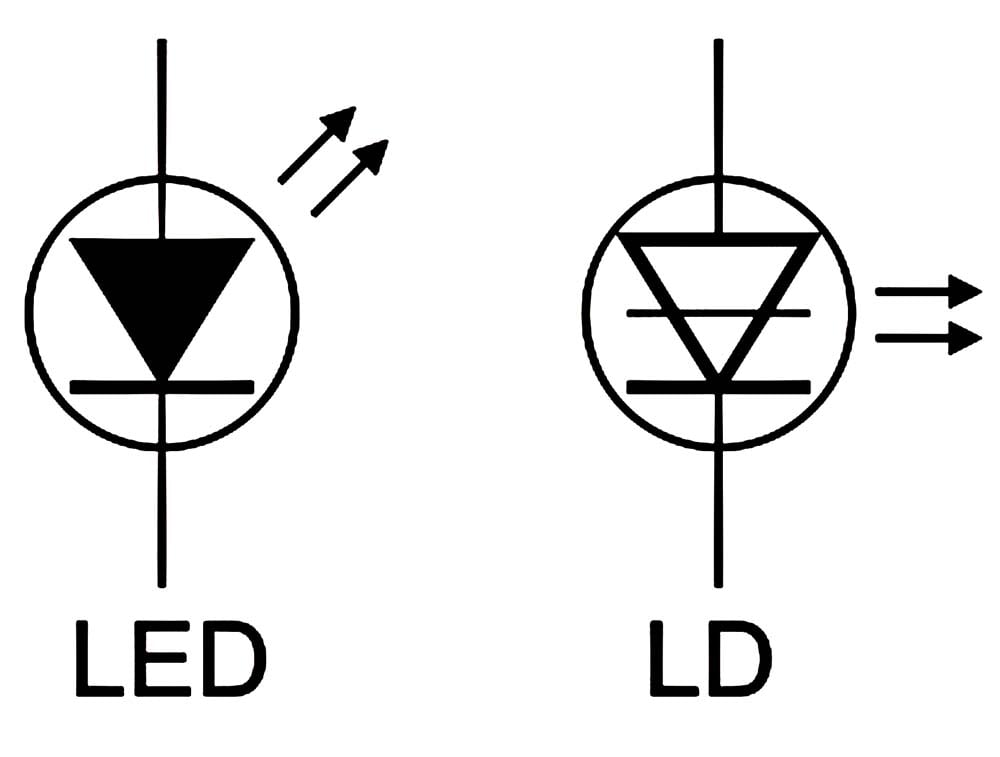
FIG. 1: Laser diodes and LEDs have several things in common, the singular most obvious is their shared ability to act as a light source. This is evident in their schematic symbols.
Depending on the component, light power levels range from a few milliwatts (mW) to hundreds of watts. For example, using a laser diode as a light source for touch- and pointing-device-input functions requires a low-power output while a laser for cutting glass or surgical chores may require a couple hundred watts.
Essentially semiconductors, laser diodes fall into one of two categories¾injection lasers (ILDs) and optically-pumped semiconductor lasers (OPSLs)¾both of which are viable as a light source in numerous applications. A typical ILD has a long narrow channel with reflective ends for guiding and focusing light. It operates like an LED in that light emission depends on current flow through a PN junction, however it differs in its ability to contain and focus light and its lower-power capabilities. Instead of a PN junction, OPSLs stimulate a III-V semiconductor chip to generate optical gain and a laser, most likely an ILD, as the light pump. Advantages of OPSLs are better wavelength selection and no interference from internal electrodes.
There are also several popular types of laser diodes available. These include double heterostructure laser diodes that pack a layer of low band-gap material between two layers of high band-gap material. Typical materials include gallium arsenide (GaAs) and aluminum gallium arsenide (AlGaAs). Other laser types include single- and multiple-quantum well, separate confinement heterostructure, and distributed feedback laser diodes.
Probably the most common and popular types are the vertical-cavity surface-emitting laser (VCSEL) and vertical external cavity surface emitting laser (VECSEL) diodes. VCSELs deliver a high-quality beam of light in a direction perpendicular to the wafer. Output is a few milliwatts. For high-power designs, VECSELs are optically pumped surface-emitting external-cavity semiconductor lasers generating multiple-watt outputs with higher beam quality than VCSELs.
For applications as a light source, laser diode wavelength is one of the most important specs. Depending on the laser's material, wavelengths range typically from 405 nm for an indium gallium nitride (InGaN) blue-violet laser, typically used in Blu-ray Disc and HD DVD drives (fig. 2), to 3,330 nm for gallium antimony arsenic (GaSbAs) lasers used for gas sensing applications (fig. 3). Typical figures for wavelength variations with respect to applied voltage are approximately 0.1 to 0.5 nm/°C, depending upon the type of component and its frequency.
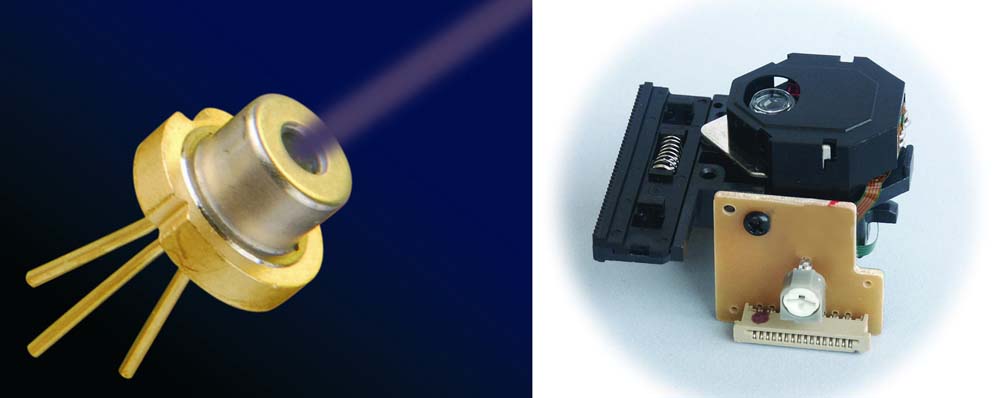
FIG. 2: A 405-nm indium gallium nitride (InGaN) blue-violet laser finds viable employment Blu-ray Disc, HD DVD, and audio CD drives. A typical assembly appears on the right.
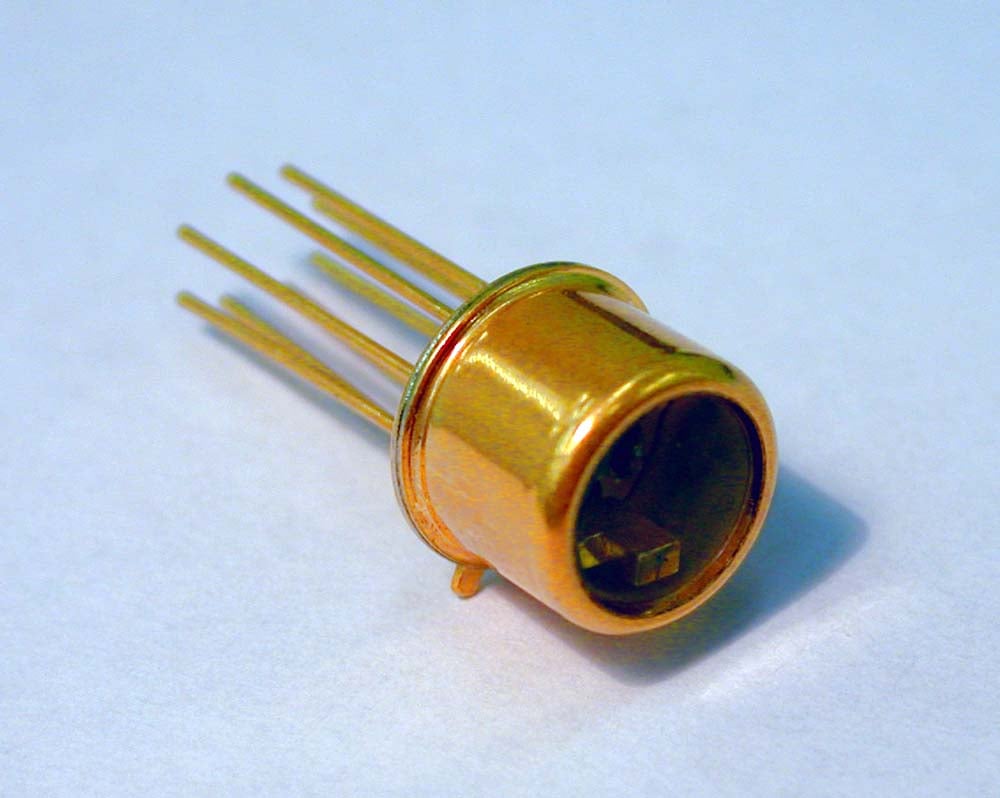
FIG. 3: Appearing similar to other types of laser diodes, this 3,200-nm laser diode suits gas-sensing applications.
LEDs
Light emitting diodes (LEDs) are much simpler than laser diodes and share several attributes including their semiconductor origins and the ability to act as a light source. LEDs are also, in some ways, more versatile. For one thing, LEDs handle a wider range of mainstream applications and most people are more knowledgeable when it comes to LEDs as opposed to laser diodes.
Whereas laser diodes focus light into a fine conical beam, LEDs disperse light in an even yet wide pattern around their domes (fig. 4). How far light disperses depends on LED size and power, i.e., the bigger and more powerful, the greater the distance and dispersion. However, this does not mean they cannot deliver precisely focused light. Various housings and components like light pipes are available that channel LED light to near pinpoint accuracy (fig. 5). Various modules, such as a light collimator, are also on the market (fig. 6).
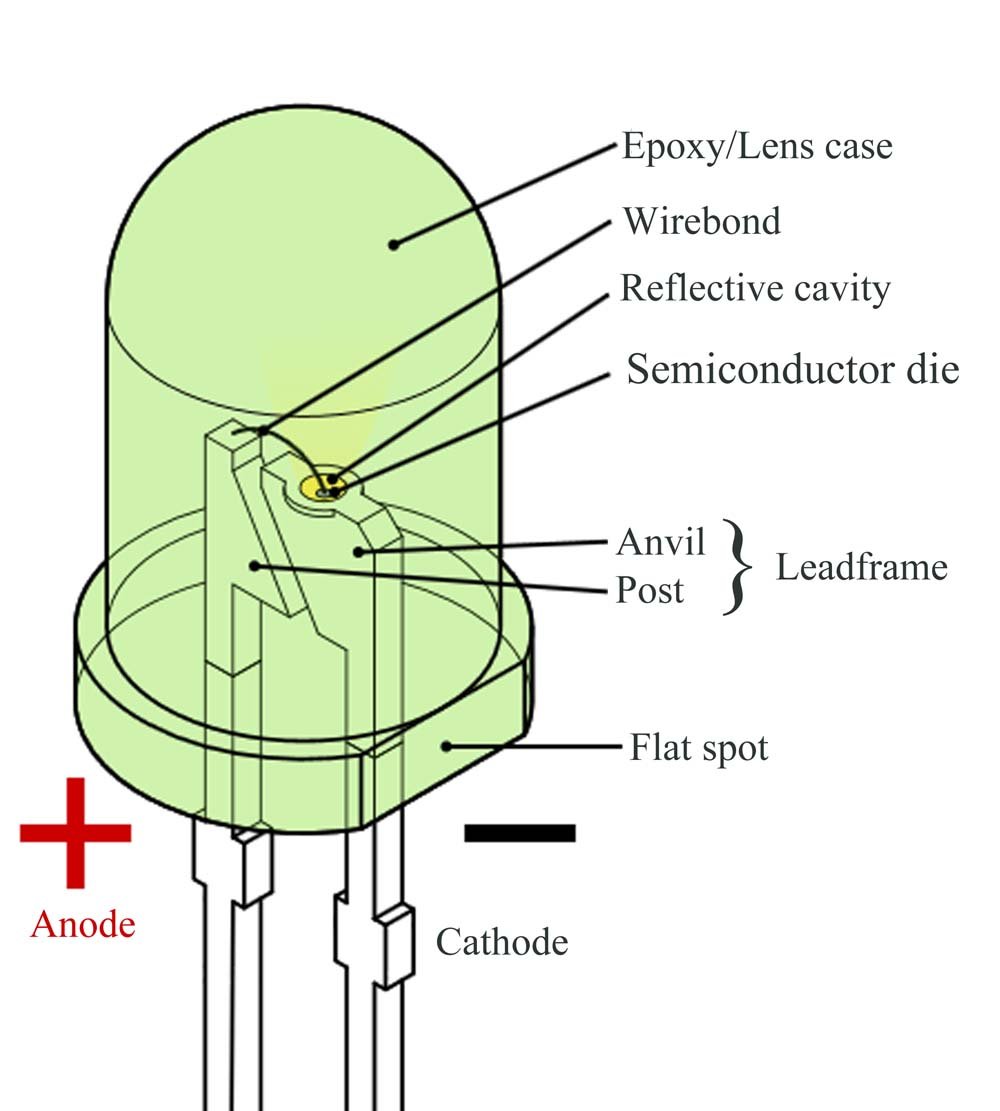
FIG. 4: The anatomy of a standard LED, light disperses widely from the top (dome) of the component.
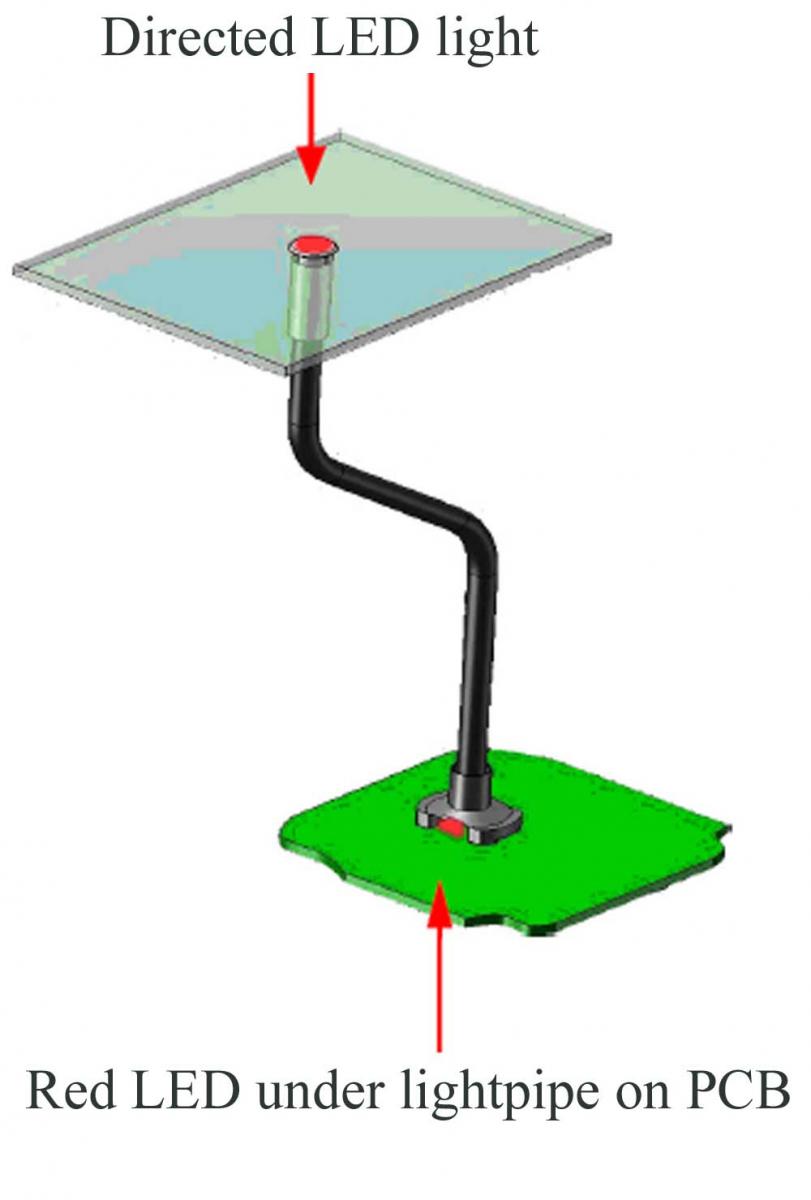
FIG. 5: A lightpipe directs LED light from the PCB it resides on to an external PCB.
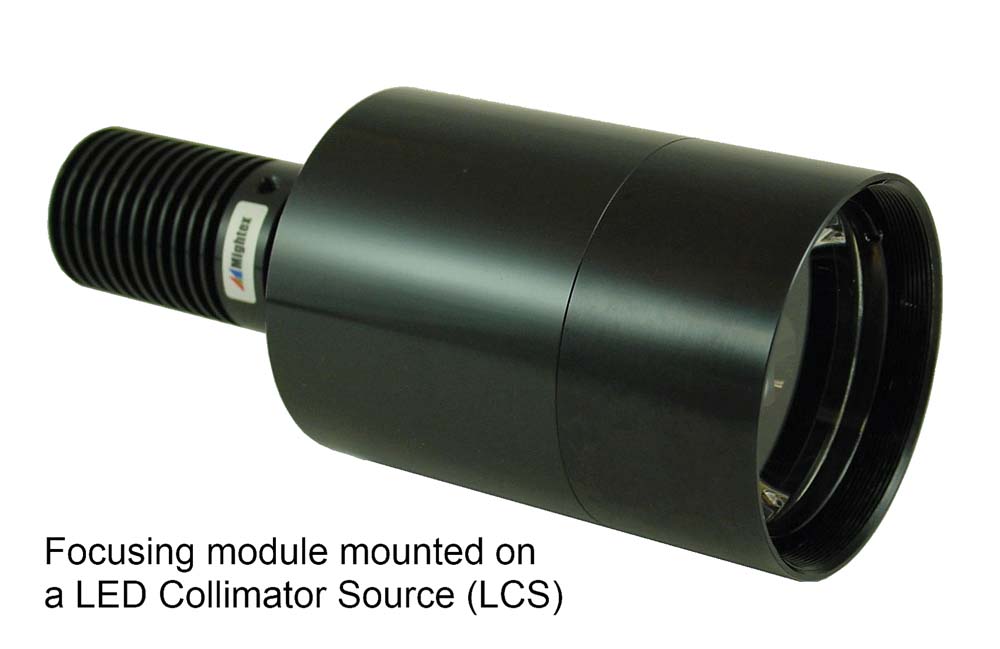
FIG. 6: This collimator focuses LED light as required by the application.
A semiconductor light source, LEDs are available in three types: low power (2 mA to 20 mA), mid power (100 mA to 1W), and high-power (1W to 3W and higher on the horizon). Wavelengths do not extend to the reaches of laser diodes; LEDs span from less than 400 nm (ultra violet) to around 760 nm (infrared). Across that span from under 400 nm to 760 nm, the components are available in a rainbow of colors: white, purple, violet, blue, green, yellow, orange, and red. Something that's not done with laser diodes, if other colors and/or shades are required, one can mix LED colors to achieve a unique shade or color variation. For example, since mixing blue and yellow yields green, users can attain various shades and hues of green by varying the intensity or number of blue or yellow LEDs (fig. 7).
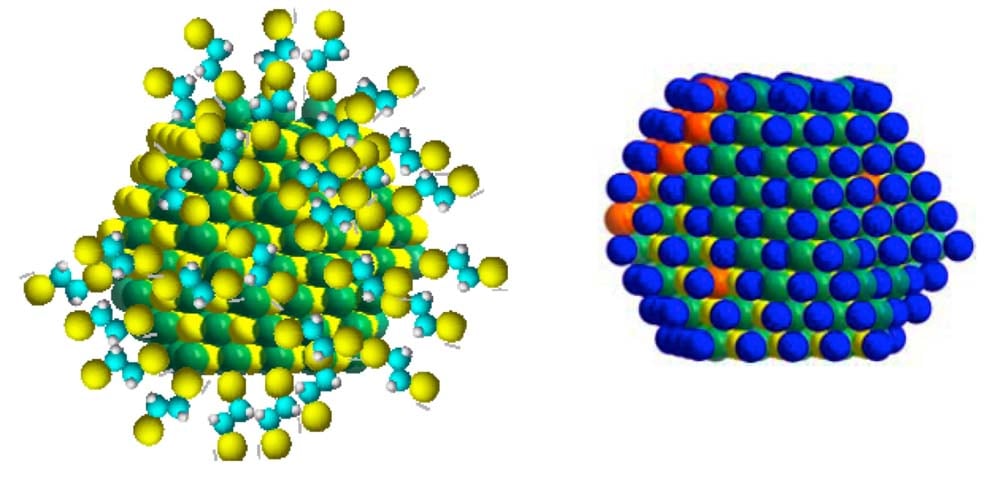
FIG. 7: You can mix LEDs to achieve a particular color or hue. In this case, blue and yellow LEDs get mixed and their intensities varied to achieve various shades of green.
Lasers and LEDs also share similar make ups. Typical LED materials include zinc selenide (ZnSe), indium gallium nitride (InGaN), silicon carbide (SiC), silicon (Si), gallium arsenide (GaAs), aluminium gallium arsenide (AlGaAs), and others. Moreover, for the most part, both components generate light by driving current through a PN junction.
Not quite ready as laser alternatives, yet in need of brief mention are organic light emitting diodes (OLEDs) and quantum dot LEDs. Currently, OLEDs cannot achieve the higher power levels necessary and are more expensive than standard LEDs. Quantum dots are semiconductor nanocrystals that are tunable from the visible throughout the infrared spectrum. Therefore, quantum dot LEDs can create almost any color. Still on the drawing board, quantum dot LEDs hold great promise for emerging applications.
Light Sourcing Apps
Primary applications for LEDs entail generating light for indicators (on/off, various functions, etc.), general illumination (lighting in the home, office, factory, etc.), and signage (traffic lights, billboards, information kiosks, etc.). These components also provide backlighting in flat-screen televisions and, as some believe, will actually form all of the pixels necessary in a high-definition display.
LEDs provide light in numerous colors from infrared to ultraviolet for test-and-measurement instruments, fiber optics, sound modification components, pointing and touchscreen devices, sensing circuits, and more. They are also deployable as photodiodes capable of photo emission and detection. Recently, LEDs are becoming cost-effective alternatives to laser diodes in certain applications.
Aside from light shows, pointers, and other novelty applications, laser diodes find serious employment as a light source for fiber optics communication, an array of test-and-measurement instruments, and barcode readers. They also shed light in image scanners and in high-speed, high-resolution printers.
Infrared and red laser diodes beam light through the holes in compact audio discs, CD-ROMs, and the myriad DVDs with their various formats that represent digital audio/video information. Although not for in-depth consideration here, but worth adding to the resume, high-power laser diodes can cut through metals, delicately trim precious metals and gems into fine jewelry, and perform dental and surgical chores with the utmost ease, accuracy, and safety.
LED Versus Laser Diode
Before going any further here, LEDs have a few million miles to go before they can match the output of high-power laser diodes. Therefore you won’t be cutting diamonds or performing an appendectomy with an LED any time soon. With that said, there are many low- to mid-power apps that LEDs are candidates for as laser substitutes
Fiber Optic Systems
A staple of fiber-optic communication systems, laser diodes convert electrical signals into light and inject it into the fiber-optic cable. Since lasers can finely focus light, they are ideal for this application, however LEDs have come a long way since their days of employment as on/off indictors.
Offering the same wavelengths necessary for fiber transmissions, LEDs have significant advantages over the laser. These include lighter weight, smaller footprint, ease of installation, small light-emitting areas compatible with fiber, high luminance, low heat, longer life, and, the most important, lower cost. Table one provides a basic comparison of specs between LEDs and laser diodes (table 1).
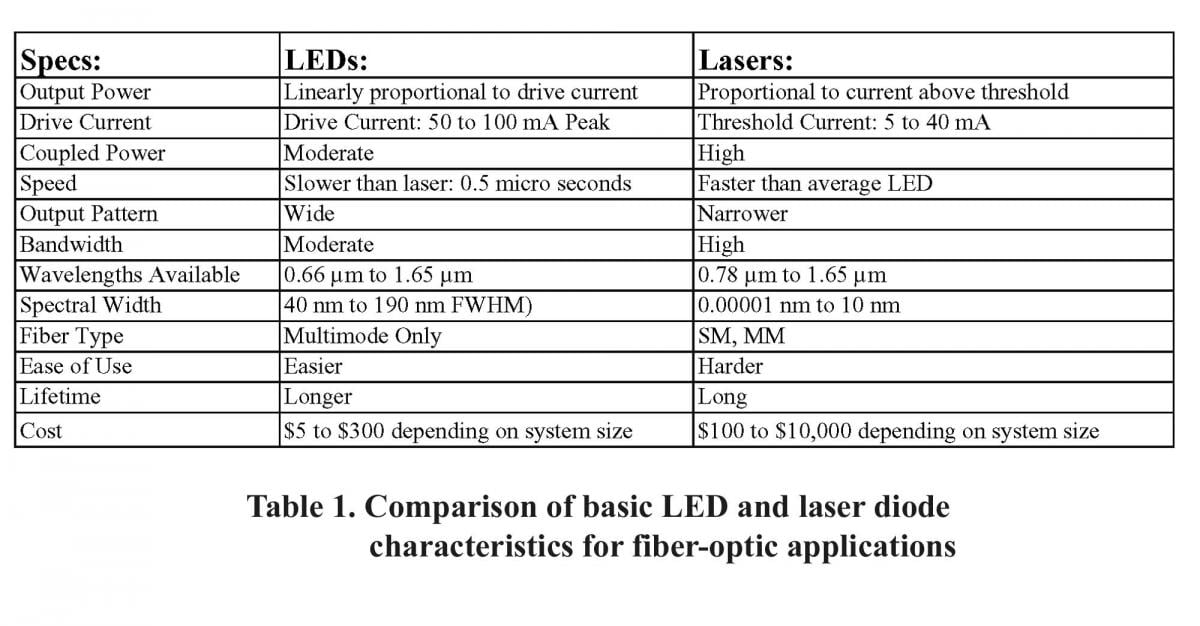
One example of an LED for fiber optic apps is the IF-E97 from Industrial Fiber Optics (http://i-fiberoptics.com). The component specifies a typical peak wavelength of 660 nm, a maximum output power coupled into plastic fiber with a 1-mm diameter core of 425 mW, and a maximum forward voltage of 2.1V (fig. 9).
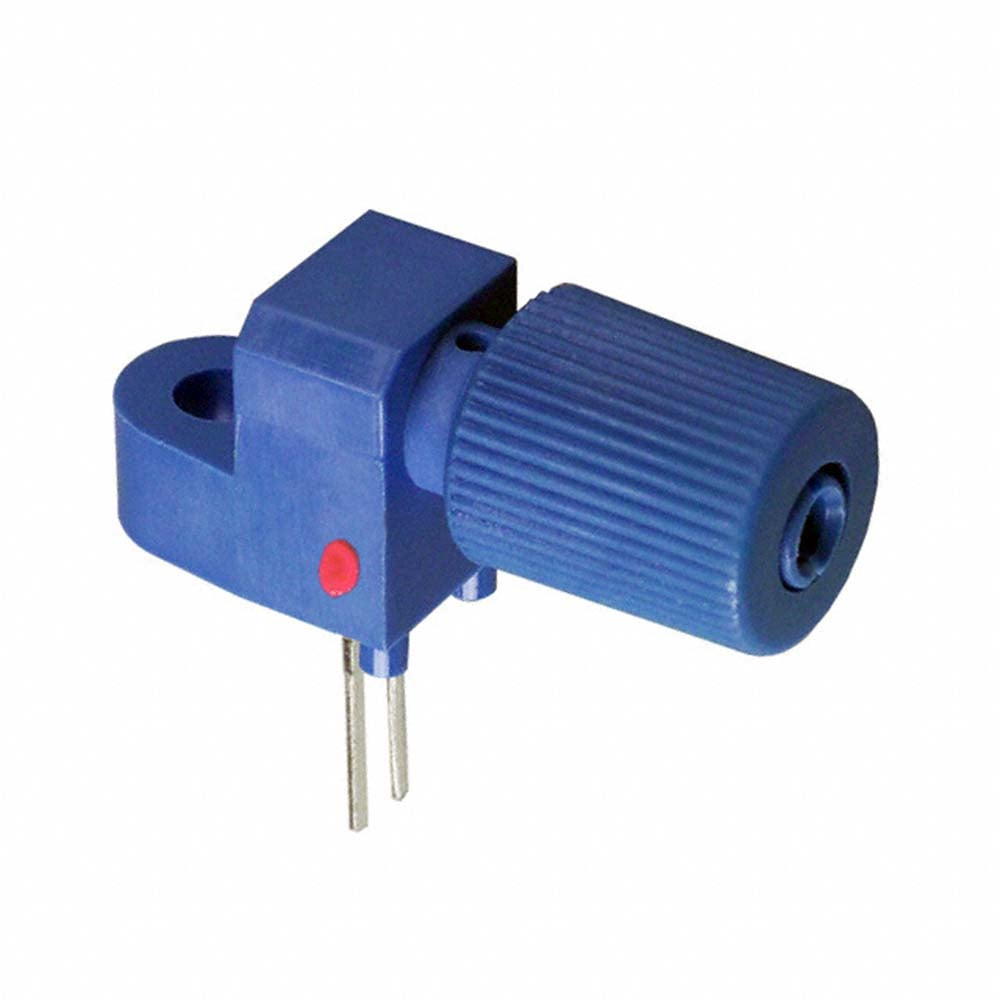
FIG. 9: Suitable for fiber optic apps in place of a laser diode, the IF-E97 LED provides a peak wavelength of 660 nm a maximum coupled output power of 425 mW.
Contrasting the IF-E97, Laser Components’ (http://www.lasercomponents.com/us/) 635-nm to 690-nm Red Wonder pigtailed, red-emitting laser diode delivers a minimum output power from 10 mW (fig. 10). Although capable of higher power than the IF-E97, in a wide range of applications one could easily go with the less expensive LED. One reason is that if you need more light output from an LED, use a higher, though pulsed, forward current.
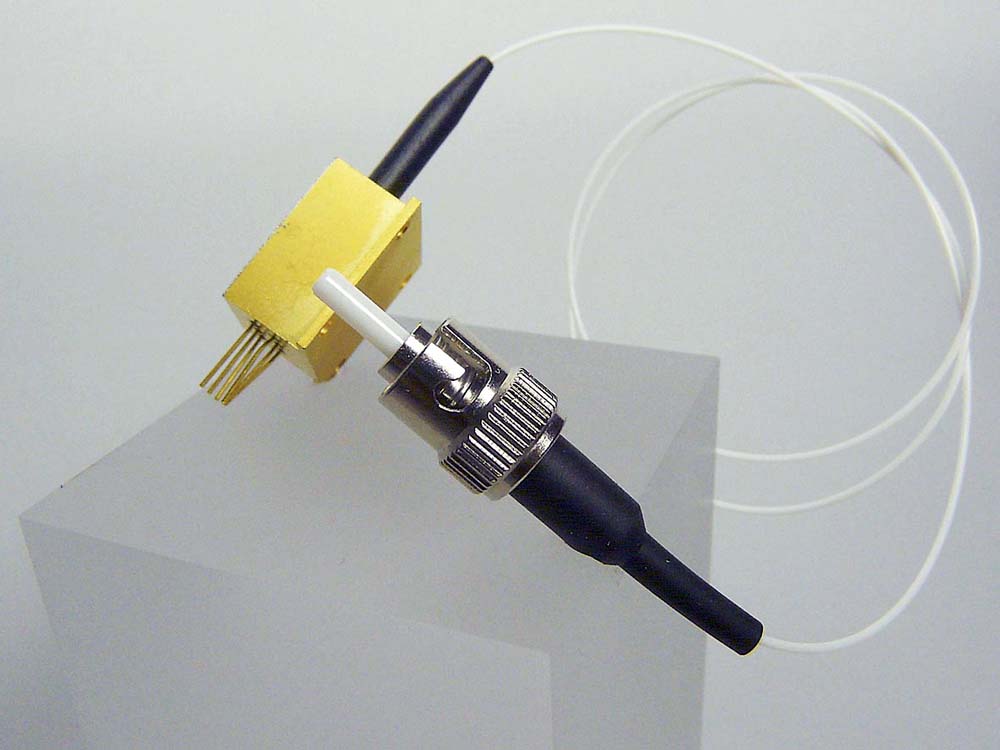
FIG. 10: Laser diode assemblies are often similar in size as LED counterparts, making replacement or substitution fairly simple.
Additionally, in most cases, housings for laser diodes and LED assemblies are similar. Though not exactly swappable, drop-in replacements, circuit board modifications are often fairly simple.
LED or Laser Printing
Companies like Oki Data and Panasonic have been promoting LED printing for several years. OKI Data designers cite digital LED light sources as being far superior to laser-based systems. They state that a multiple-LED source consists of thousands of individual solid-state light sources that shine through focusing lenses onto the drum surface. As the array stretches directly across the drum, the process eliminates all parallax errors and timing errors.
Both companies subscribe to the theory that smaller dot size translates into higher resolution. They make a good case since laser heads can produce dot sizes around 60 μm while digital LED technology can produce dots as small as 34 μm.
Laser diode and LED based printers exploit the same electro-photography technology as photo copiers. Aged and proven, LED or laser, the electro-photographic process requires several steps. For starts, a photo-conductive plate charges up with static electricity. Second, the mechanism exposes the plate to an optical image via light. When parts of the plate selectively discharge, an image forms on its surface.
A development step involves spreading a fine powder (toner) over the selectively-discharged plate. Toner sticks to the charged areas and forms a printed image. Next, an electrostatic field transfers the image on the photosensitive surface to a sheet of paper and, lastly, the image permanently fuses to paper using heat and pressure.
Laser and LED printers differ in construction and scanning processes (fig. 11). Similar to electron beam scanning employed in CRTs, laser printers use a laser beam and scanner assembly to form images one bit at a time on the photo-conductor. A controller modulates the laser beam and directs it through a lens and on to a polygon mirror. The beam reflects off the mirror and passes through a scanning-lens system that conditions and corrects the beam then scans it onto the photoconductor.
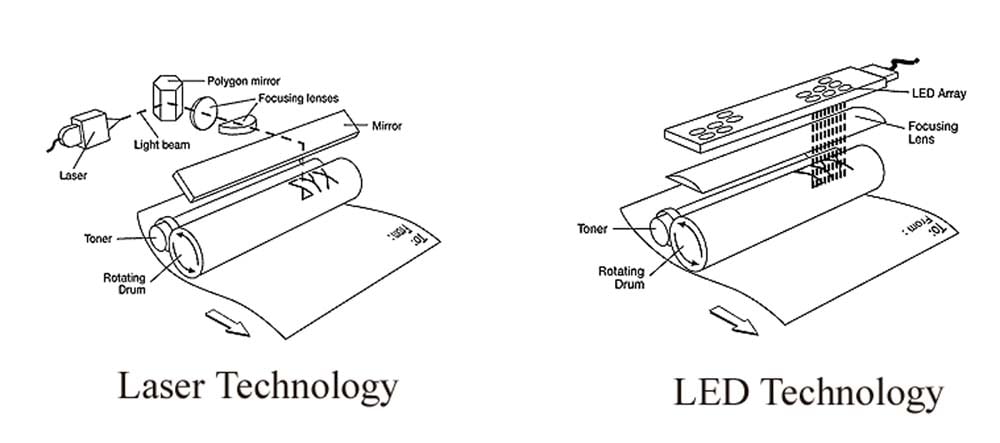
FIG. 11: A side-by-side view of laser (left) and LED (right) printers shows an LED printer using fewer parts than its laser-based counterpart.
Alternatively, LED printers rely on an array of small LEDs to generate the image, eliminating the need for a scanner. This also translates into far fewer moving parts.
One drawback is slightly slower printing with LEDs. Currently, laser and LED technologies are in the same ballpark pricewise, but LED prices are dropping so lower printer prices are foreseeable. Once again, the LED proves to be a viable laser replacement.
LEDs and Lasers Collaborate
Just so it’s not always a case of which technology is superior, LED and laser technologies can work together as a source of light, providing the best of both worlds. One example is the NanoLED light source system from Horiba Scientific (http://www.horiba.com).
The system consists of a NanoLED-C2 Controller and a range of interchangeable laser-diode and LED heads (fig. 12). Two NanoLED controllers are available: the NanoLED-C2 bench-top module for stand-alone operation and the FluoroHub controller module with the FluoroHub-NL software-controlled plug-in accessory card.
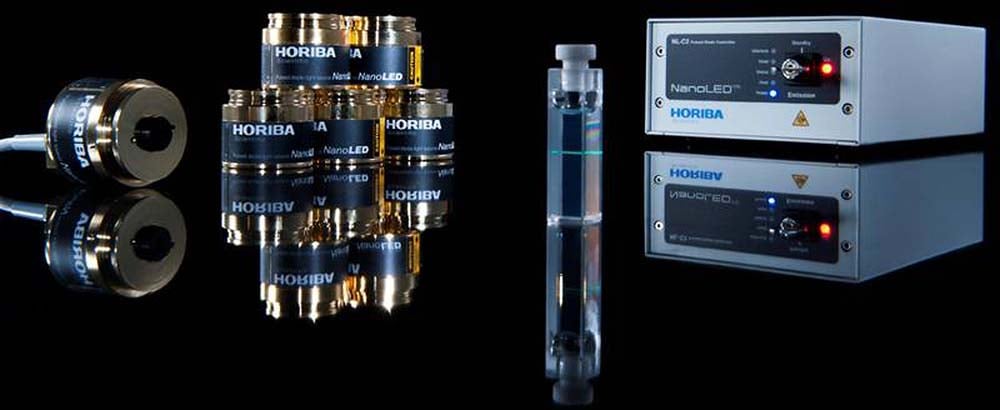
FIG. 12: Horiba Scientific’s NanoLED provides laser diode and LED sources in a single system.
LED sources generate nanosecond (ns) pulses while laser-diode sources generate pico-second pulses. High intensity versions of laser diodes are also available which generate pulses of approximately 1 ns.
Employing both laser diode and LED technologies, NanoLED generates short optical pulses down to 70 picoseconds (ps) over a range of repetition rates up to 1 MHz and wavelengths. Depending on the model, wavelengths span from 375 nm ±10 nm at <200 ps (model N-375L) to 1,310 nm ±20 nm at <500 ps (model N1310L). Additional features include adjustable focusing lens, un-polarized outputs, and pulse widths below 370 nm for certain LEDs available upon request.
One of the many highly productive uses for this system is subbing lasers and LEDs in a prototype to determine which of the two technologies serves the design best. Other applications are numerous. They include time-correlated single photon counting (TCSPC) excitation, fluorescence spectroscopy, detector response testing, DNA sequencing, and for replacing mode-locked laser and flash lamps in low-cost or portable applications.
Adaption Help Is Available
Speaking of adapting laser systems for LED operation and vice versa, there are components available to make that task pain and sweat free. Thorlabs (http://www.thorlabs.com) is one company offering a number of mounting components for both type light sources.
For LEDs in fiber optic apps, the LEDMF mount supports T1-3/4 or TO-18 packages using an included adapter ring (fig. 13). S05LEDM and S1LEDM LED mounts are SM05 (0.535"-40) threaded and SM1 (1.035"-40) threaded, respectively, and hold TO-18, TO-39, TO-46, or T1-3/4 packages using included adapter rings. External threading allows them to be used in a wide variety of SM05 or SM1-compatible optomechanics including the company’s Kinematic mounts, lens tubes, XY translating mounts, 16-mm cage plates (SM05-compatible), and 30-mm cage plates (SM1-compatible).
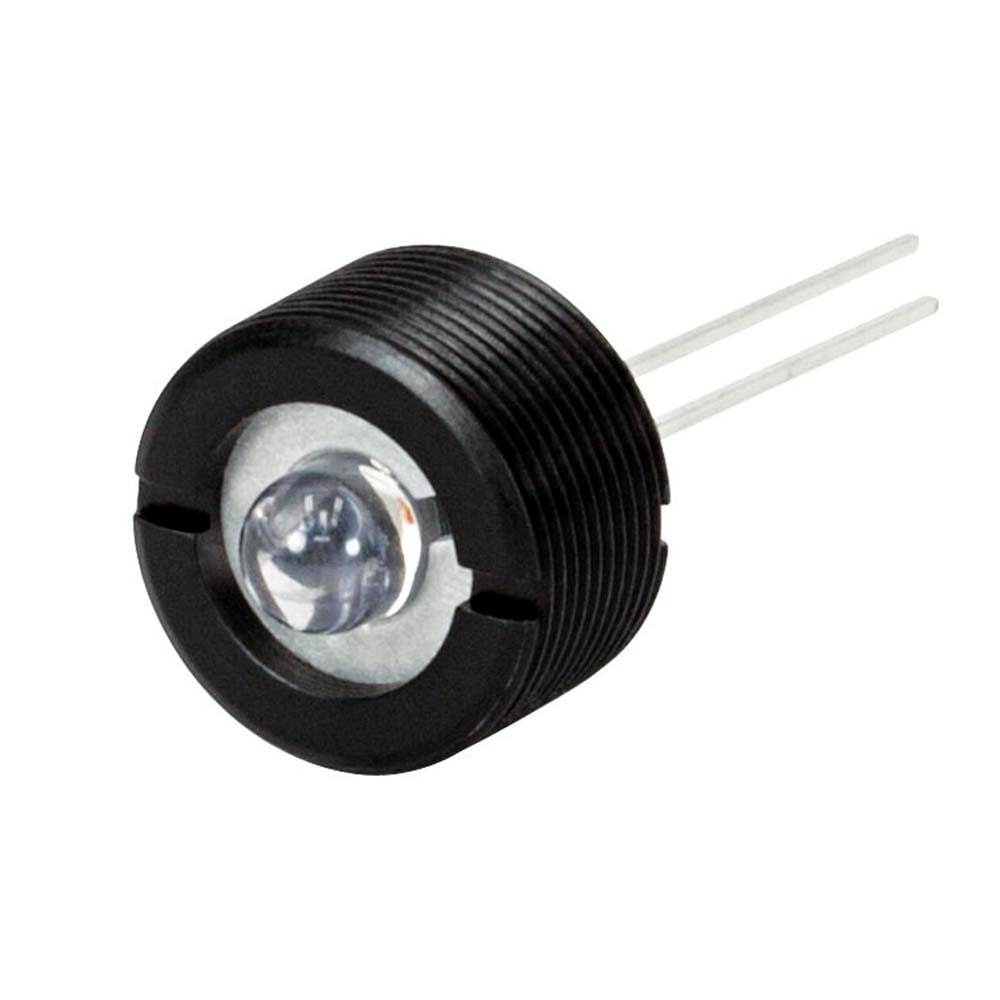
FIG. 13: For fiber and other designs, Thorlabs’ LEDMF mount supports T1-3/4 or TO-18 LED packages.
Supporting laser diodes, the S05LM9 and S1LM9 mount 5.6-mm or 9-mm laser diodes directly into SM05 or SM1 lens tube systems, respectively (fig. 14). Both components come with one aluminum adapter and two black retaining rings. For easy assembly of lens tube-based setups, the laser diode aligns to the optical axis of the lens tube.
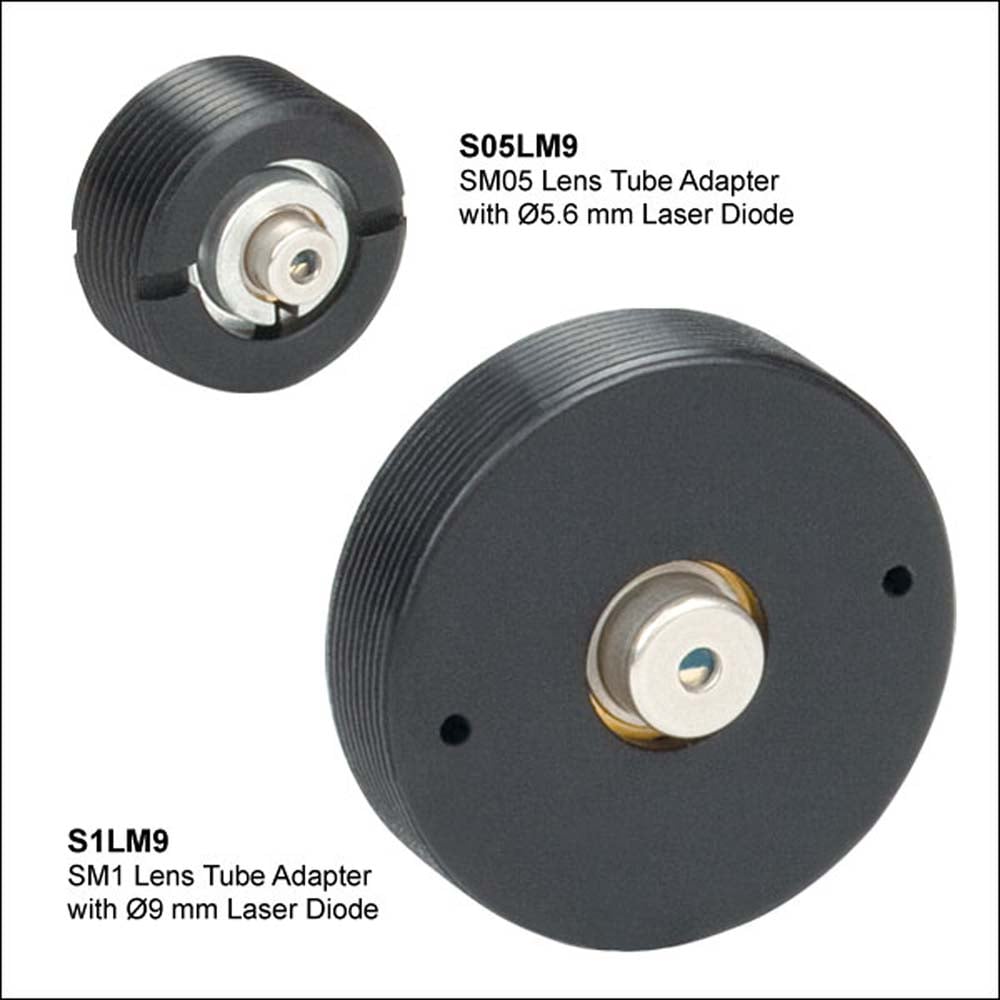
FIG. 14: Indicated in the figure, the S05LM9 and S1LM9 mount 5.6-mm or 9-mm laser diodes directly into SM05 or SM1 lens tube systems.
Saving the Most for Least Last
Lastly, probably the most attractive advantage of using LEDs instead of laser diodes is the safety factor. For now, LEDs do not have to meet the eye-safety requirements common to laser diodes. This reduces some testing costs and eliminates the need to label the assembly in accordance with said safety standards. As LEDs become more powerful and even more precise focusing methods evolve, they may soon require some work in determining how safe they are, but until then it’s anything goes.
There are far more applications traditionally employing laser diodes as the light source where LEDs are proving to be more efficient, more reliable, longer lasting, and lower in cost. At this point in time it appears that the bulk of growth opportunities lie in the health and medical markets. Though eons beyond the scope of this publication, one example deserves brief mention: optogenetics.
A fairly new field of research starting around 1999, optogenetics attempts to use a light source for selectively and precisely controlling neuron activity in certain human brain cells. According to the Open Optogenetics Organization, “For optogenetics applications, LEDs surpass lasers in almost every respect. They are cheaper, smaller, more reliable, and easier to control. They fit into implants, allowing unimpeded light delivery. But their major drawback is the difficulty of coupling their light into a fiber optic cable with high efficiency. Although individual LEDs can emit as much as 5W of light, the light spreads in all directions, rather than in a coherent beam.” Hopefully, some of the tools presented here can help eliminate those drawbacks.~MD